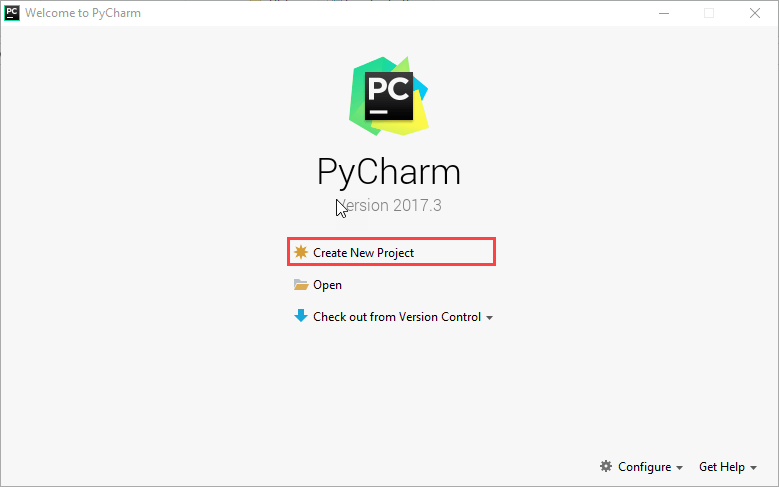Learn a programming language. All programs are created through coding. If you want to create your own programs, you will need to be familiar with at least one programming language. The languages you will need to learn will vary depending on the type of program you want to create. Some of the more useful and important ones include:
Windows has its own software development tool like visual studio.you can use it to create software and different program that can run on windows environment. You can use any of the supportable language supported by.net framework. You can download the software at Microsoft site. Tiger Software Builder Express v.1 Now anyone can create software programs. No programming experience is necessary to create a software program in 20 minutes or less. Every day more and more people are creating software better than most of the professionals. TSB Free v.1 Now anyone can create software programs.

- C - C is a low-level language that interacts very closely with the computer's hardware. It is one of the older programming languages that still sees widespread use.
- C++ - The biggest drawback of C is that it is not object-oriented. This is where C++ comes in. C++ is currently the most popular programming language in the world. Programs such as Chrome, Firefox, Photoshop, and many others are all built with C++. It is also a very popular language for creating video games.
- Java - Java is an evolution of the C++ language, and is extremely portable. Most computers, regardless of operating system, can run a Java Virtual Machine, allowing the program to be used nearly universally. It is widely used in video games and business software, and is often recommended as an essential language.
- C# - C# is a Windows-based language and is one of the main languages used when creating Windows programs. It is closely related to Java and C++, and should be easy to learn if you're already familiar with Java. If you want to make a Windows or Windows Phone program, you'll want to take a look at this language.
- Objective-C - This is another cousin of the C language that is specifically designed for Apple systems. If you want to make iPhone or iPad apps, this is the language for you.
Desktop shortcuts offer easy to way access files, programs and folders. In Windows 7 and earlier versions of Windows, we could create shortcut to a program on desktop by right-clicking on the program in the Start menu, clicking Send to option, and then clicking Desktop (create shortcut).
Create Your Own Software Program
In Windows 10, you don’t get the Send to option when you right-click on a program on the Start menu. Because of this change, many users who upgraded from Windows 7 to Windows 10 are finding it difficult to create program shortcuts on desktop.
In this guide, we will see all the ways out there to create desktop shortcuts for programs in Windows 10.
Method 1 of 3
Create program shortcut on desktop by dragging and dropping
Like Windows 7, Windows 10 also supports dragging and dropping program shortcuts from the Start menu to desktop to create desktop shortcuts. The same method can also be used to create app shortcuts on desktop.
Step 1: Minimize running programs, and make sure that you can see the desktop.
How To Create Software Programs Free
Step 2: Either press the Windows logo key on the keyboard or click Start button on the taskbar to see the Start menu.
Step 3: Click App apps, and then look for the program that you would like to see on desktop as shortcut, click on the program entry, and then drag-and-drop it to the desktop to create a shortcut of program on desktop.
The shortcut should now appear on desktop. If you can’t see any icons on the desktop, please show desktop icons by right-clicking on desktop, clicking View, and then clicking Show desktop icons option.
Method 2 of 3
Create desktop shortcut by creating shortcut to executable
If for some reason, you are not comfortable with the above method, you can use this method to create desktop shortcut of a program.
Step 1: Open Start menu either by pressing Windows logo key or clicking Start button.
Step 2: Click All apps option, and find the program that you want to create a shortcut to.

Step 3:Right-click on the program, click More, and then click Open file location.
Step 4: Finally, right-click on the program shortcut, click Send to, and then click Desktop (create shortcut). That’s it!
Method 3 of 3
Another way to create desktop shortcut by creating shortcut to program executable
Step 1: Open the drive where Windows 10 is installed. If Windows 10 is installed on “C” drive, open up the same.
Step 2: Open up Program Files and Program Files (x86) folders one after another and look for the folder containing the program that you want to create a desktop shortcut to. In most cases, the folder will have a label of the program or label of the company/developer behind the program.
NOTE: Program Files (x86) folder appears only in the x64 type of Windows. If you’re on x86 Windows 10, all programs must be under Program Files unless you changed the default installation directory or moved a program to another drive.
Step 3: Look for the executable (.exe file) of the program, right-click on it, click Send to, and then click Desktop (create shortcut) to create a shortcut of the program on desktop.
How To Create A Software Program Using Python
Desktop shortcuts to programs can also be created using the New Shortcut wizard but we are not discussing it here as it’s more complicated than above mentioned methods.